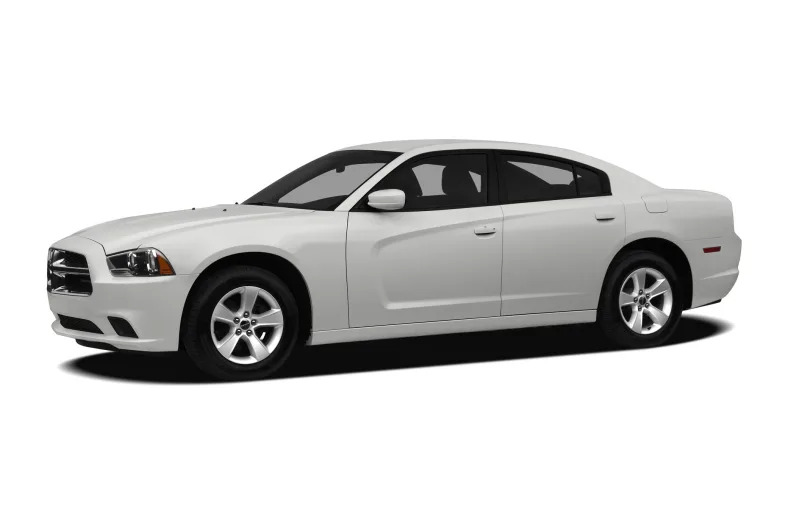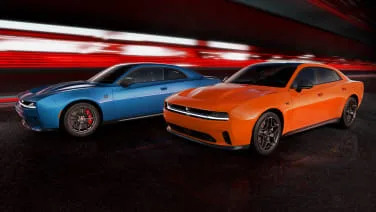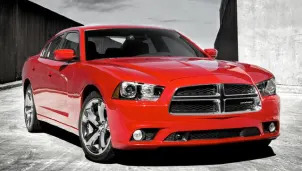2011 Dodge Charger
Some Things Never Go Out Of Style The year was 1966. The muscle car era, which arguably began two years earlier with the introduction of the Pontiac GTO, was in full swing. In order to have a chance at attracting the young, affluent buyers so craved by American automakers of the day, a car needed to offer equal doses of style and horsepower. Dodge, with its brand new Charger fastback, offered plenty of both. But it wasn't until 1968 that the Dodge Charger truly hit its stride, earning it legendary status in the annals of automotive history. Coke-bottle styling, a full suite of powerful V8 engines – including the 440 Six Pack and 426 Hemi – and plenty of success on the NASCAR circuit meant that the Dodge Boys had a winner on their hands. Sadly, the heyday of American muscle was nearly over by the time Dodge figured out the formula, and the car was just a shell of its former muscular self by the end of 1974. The rest of the 1970s were not kind to the Charger, and sales slowly faded away until the model name was canceled altogether after the 1978 model year. We'll gracefully skip over the front-wheel-drive years from 1983 through 1987 and move straight to the nameplate's reintroduction in 2006. The Hemi was back in action, the new car's styling was aggressive and generally well received and sales took off. But by 2010, yet again the reborn Charger was seriously showing its age, having received nothing in the way of significant interior or exterior updates during its five years back on the market and being saddled with a fully uncompetitive line of V6 engines and even an ancient four-speed automatic transmission in base models. Dodge has finally given the "new" Charger some attention with an update for 2011 that includes new looks, new engines and the complete absence of a four-speed transmission. Does this mean that Dodge is done letting the Charger nameplate wither on the vine? Without spoiling the rest of the review, let's just say we have some good news to share. The first bit of evidence that Dodge is serious about reinvigorating the Charger comes the first time you lay eyes on it. Sheetmetal is much more sculpted than before, with flowing, feminine lines that instantly recall those of the much-loved 1970 model. This is purely intentional. The large scallops that indent the front doors and aluminum hood, and the subtle double-diamond effect in profile (not nearly as pronounced a 'Coke-bottle' curve as the Chargers of yore, but still welcome in today's era of me-too organic wedge-shaped cars) are clearly meant to evoke warm and fuzzy memories of a bygone era. And for the most part, it works, even for those of us only old enough to witness such bold styling motifs while watching Barrett-Jackson on SPEED. It's not until you begin to dissect the details that you remember this is a fully modern automobile. Panel gaps are tight and …
Full Review
Some Things Never Go Out Of Style The year was 1966. The muscle car era, which arguably began two years earlier with the introduction of the Pontiac GTO, was in full swing. In order to have a chance at attracting the young, affluent buyers so craved by American automakers of the day, a car needed to offer equal doses of style and horsepower. Dodge, with its brand new Charger fastback, offered plenty of both. But it wasn't until 1968 that the Dodge Charger truly hit its stride, earning it legendary status in the annals of automotive history. Coke-bottle styling, a full suite of powerful V8 engines – including the 440 Six Pack and 426 Hemi – and plenty of success on the NASCAR circuit meant that the Dodge Boys had a winner on their hands. Sadly, the heyday of American muscle was nearly over by the time Dodge figured out the formula, and the car was just a shell of its former muscular self by the end of 1974. The rest of the 1970s were not kind to the Charger, and sales slowly faded away until the model name was canceled altogether after the 1978 model year. We'll gracefully skip over the front-wheel-drive years from 1983 through 1987 and move straight to the nameplate's reintroduction in 2006. The Hemi was back in action, the new car's styling was aggressive and generally well received and sales took off. But by 2010, yet again the reborn Charger was seriously showing its age, having received nothing in the way of significant interior or exterior updates during its five years back on the market and being saddled with a fully uncompetitive line of V6 engines and even an ancient four-speed automatic transmission in base models. Dodge has finally given the "new" Charger some attention with an update for 2011 that includes new looks, new engines and the complete absence of a four-speed transmission. Does this mean that Dodge is done letting the Charger nameplate wither on the vine? Without spoiling the rest of the review, let's just say we have some good news to share. The first bit of evidence that Dodge is serious about reinvigorating the Charger comes the first time you lay eyes on it. Sheetmetal is much more sculpted than before, with flowing, feminine lines that instantly recall those of the much-loved 1970 model. This is purely intentional. The large scallops that indent the front doors and aluminum hood, and the subtle double-diamond effect in profile (not nearly as pronounced a 'Coke-bottle' curve as the Chargers of yore, but still welcome in today's era of me-too organic wedge-shaped cars) are clearly meant to evoke warm and fuzzy memories of a bygone era. And for the most part, it works, even for those of us only old enough to witness such bold styling motifs while watching Barrett-Jackson on SPEED. It's not until you begin to dissect the details that you remember this is a fully modern automobile. Panel gaps are tight and …
Hide Full Review
Hide Full Review
Retail Price
$25,395 - $32,545
MSRP / Window Sticker Price
| Engine | 3.6L V-6, 5.7L V-8 |
| MPG | Up to 18 city / 27 highway |
| Seating | 5 Passengers |
| Transmission | 5-spd w/OD |
| Power | 292 - 370 hp |
| Drivetrain | all wheel, rear-wheel |
| Curb Weight | 3,961 - 4,450 lbs |
Smart Buy Program is powered by 





